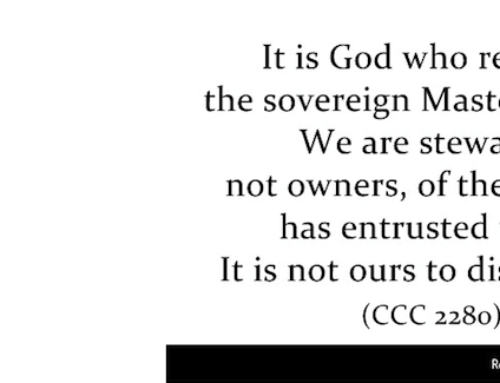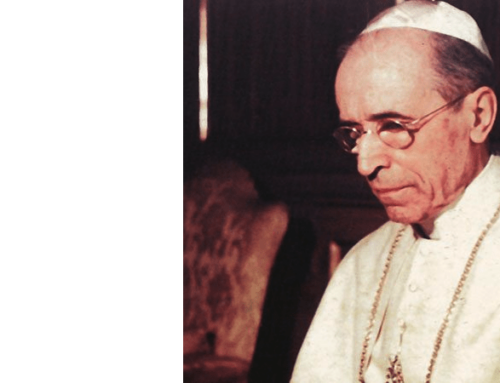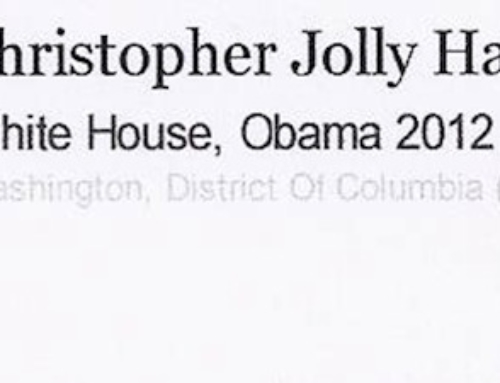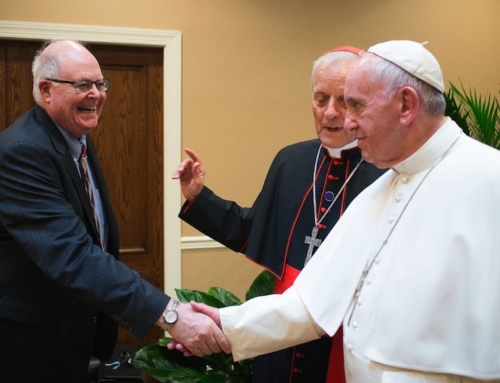September, 2007
Reviewed by William Donohue.
Every now and then I read a book that makes me want to stand up and cheer. The latest entry is Who Really Caresby Arthur C. Brooks, professor of public administration at Syracuse University’s Maxwell School of Citizenship and Public Affairs. We’ve become e-mail “pen pals,” and I’m happy to say that Arthur is Roman Catholic.
Brooks has put together one of the most incredible indictments of the finger-pointing left-wing secular elites in recent memory. The same people who never stop lecturing the rest of us on our alleged greed, we learn, turn out to be the stingiest of them all. Others may have said this before, but no one has presented the data like Brooks. His evidence is overwhelming.
Who Really Cares pairs nicely with Paul Johnson’s 1988 best-seller, Intellectuals, and Peter Schweizer’s more recent book, Do As I Say (Not As I Do). Johnson detailed the unbelievable hy-pocrisy of some of the West’s greatest minds, from Marx and Rousseau to Sartre and Lillian Hellman; Schweizer did the same with today’s celebrities, from Michael Moore and Hillary Clinton to Barbara Streisand and Edward Kennedy.
Unlike the Johnson and Schweizer contributions, Brooks doesn’t focus on the big names—he makes comparisons based on demographic groups—but his rendering is similar: the reader walks away feeling a genuine contempt for the duplicity and arrogance of the lecturing class. And what will be of most interest to the readers of Catalyst, Brooks makes plain the wholly unearned reputation that secular liberals have in caring for the poor. They may have mastered the rhetoric of caring, but it is religious conservatives who are the champions of actually doing something to help the dispossessed.
Brooks is nothing if not honest. He approached the subject of charitable giving through the lens of his graduate-school years, i.e., he took it as axiomatic that because secular liberals expressed greater interest in the poor, they were necessarily more generous. But as he learned, the data do not support this conclusion. Hence, he changed his mind. The “hence” should not be read flippantly: it is a rare scholar, in my experience, who allows the evidence to affect his conclusions; most are so ideologically driven that they do not let the evidence get in the way of their conclusions.
There are several myths that Brooks explodes in his book. One of them is that the American people are a selfish lot who turn their backs on the poor. Not true. “Private American giving could more than finance the entire annual gross domestic product (GDP) of Sweden, Norway, and Den-mark,” Brooks writes. And contrary to what many people believe, charitable giving cannot be explained by tax breaks afforded by the IRS. Only 20 percent of those who give to charities do so because of a tax deduction; 80 percent give because “those who have more should give to those who have less.”
Charitable giving, as Brooks informs, should not be measured simply by writing checks. Using available data, he calculates time, as well as money. More than half of all Americans, for instance, volunteer their time to help some cause. Others, often the same people as it turns out, give blood; others may baby-sit for a neighbor. And so forth. Interestingly, those who give also appear to be more tolerant and maintain less prejudices that those who do not.
It is commonplace in the halls of academia to assume that conservatives are greedy and liberals are caring. But, in fact, it is conservatives who are by far the most generous—not only with their money, but with their time. It is not as though they are richer: as Brooks shows, “liberal families earn on average 6 percent more per year than conservative families, and conservative families [give] more than liberal families within every income class, from poor to middle class to rich.” Similarly, Republicans give more than Democrats.
Why is the conventional wisdom wrong? Because liberals get brownie points for talking about the poor more than conservatives, even if their idea of “helping” the indigent is through government transfers. Quite frankly, they love to play Robin Hood with other people’s money, having never found an income redistribution scheme they couldn’t endorse. But as Brooks correctly notes, “Government spending is not charity.” (His italics.) The data also allow him to conclude that “People who think the government should redistribute income are less likely to donate to charity than people who don’t think so.”
All of this reminds me of Marx and Rousseau: Marx, the father of socialism, fathered a child out of wedlock (he impregnated his maid) and never gave his child a dime; Rousseau, another radical egalitarian, fathered five illegitimate kids and walked away from his responsibilities (though this didn’t stop him from writing a book on child rearing). For a modern day example of Brooks’ point, consider the Clergy Leadership Network founded by Rev. Brenda Bartella Peterson.
For Peterson, “paying taxes is a way of loving thy neighbor,” and for her clergy organization, slashing taxes is “inevitably an appeal to our greed, not to our generosity or compassion.” In other words, those who want to keep the money they’ve earned and spend it the way they choose (often on others) are the greedy ones. Those who want the government to pick the pockets of the rich are the altruists. They actually believe this!
The conventional wisdom is also wrong with regards to the generosity of the faithful vs. the faithless. It is a staple of liberal thought that secularists are more charitable than churchgoers, but the evidence shows just the opposite. “Religious people are far more charitable than nonreligious people,” writes Brooks. Indeed, he says that “In years of research, I have never found a measurable way in which secularists are more charitable than religious people.”
What Brooks found was that the faithful are more charitable across the board. “Religious people are more charitable in every measurable nonreligious way—including secular donations, informal giving, and even acts of kindness and honesty—than secularists.” They give more blood and are 57 percent more likely to give to the homeless than secularists. What is really astounding is that in the aftermath of 9/11, “People who never attended church were 11 percentage points less likely than regular churchgoers to give to a 9/11 cause (56 to 67 percent).”
Brooks drives his point home by comparing the charitable giving of San Franciscans to South Dakotans. Families in both groups give away about $1,300 a year, but because the former make 78 percent more money than the latter, “The average South Dakotan family gives away 75 percent more of its household income each year than the average family in San Francisco.” There’s a reason for this disparity: “Fifty percent of South Dakotans attend their houses of worship every week, versus 14 percent of San Franciscans. On the other hand, 49 percent of San Franciscans never attend church, but the statistic drops to 10 percent for South Dakotans.”
Could it be that those who are religious earn more than secularists, thus accounting for the discrepancy in giving? Not at all. Brooks details that “an average secularist nongiver earns 16 percent more money each year than a religious giver.” (His emphasis.) Yet secular liberals “are 19 percent points less likely to give each year than religious conservatives, and 9 percent less likely than the population in general.”
Family life is also an important explanatory variable. Married people give more than single people; they are also happier. And happiness is “strongly associated with high levels of giving.” To top it off, “American conservatives consistently report higher levels of subjective well-being than liberals.” These factors are all related. “Conservatives tend to enjoy more traditional, religious, and stable families than liberals,” says Brooks, and “these types of families bring ongoing happiness for most people.”
Brooks concludes that “religion, skepticism about the government in economic life, strong families, and personal entrepreneurism” are the four most important qualities that account for charitable giving. Because the poor actually are the most generous of all socio-economic classes—they give proportionately more than the middle class or the upper class—Brooks recommends that their charitable giving be given a tax break even if they don’t itemize. This makes eminently good sense.
As I said at the beginning, it is the non-stop lecturing we get from the educated talking heads in the classroom and in the media about the compassion they have for the poor—unlike those religious conservative types—that galls me most of all. Their idea of helping the poor comes down to higher taxes and soup kitchens, neither of which extracts a whole lot from them.
In the 1970s, I taught in an inner-city Catholic elementary school in Spanish Harlem during the day and went to New York University at night for my Ph.D. in sociology. In one class, after listening to hippie students blaming Exxon for the low achievement of inner-city students (I still haven’t figured that one out), I commended them for their interest in servicing the poor and then asked if they wanted to spare some time on a weekend tutoring my black and Puerto Rican students. No one spoke.
There is more than hypocrisy involved. These hand-wringing leftists are quick to condemn the pro-life community for its alleged fixation on the unborn, yet it is the faithful who are more generous to the poor than the faithless. Yet all Castro has to do is don his fatigues and talk compassionately about the oppressed—all the while grinding his boots into their faces—and he is a saint in their eyes.
Ronald Reagan once defined a conservative as someone who sees someone drowning from a pier, throws him a rope, but intentionally throws one that is a bit short, thus making the needy one work a bit before he’s rescued. A liberal, by contrast, throws a rope that is plenty long enough, and when the needy one picks up his end, the liberal drops his and then goes off to help someone else.
Reagan would have loved Brooks’ book. You most certainly will.







